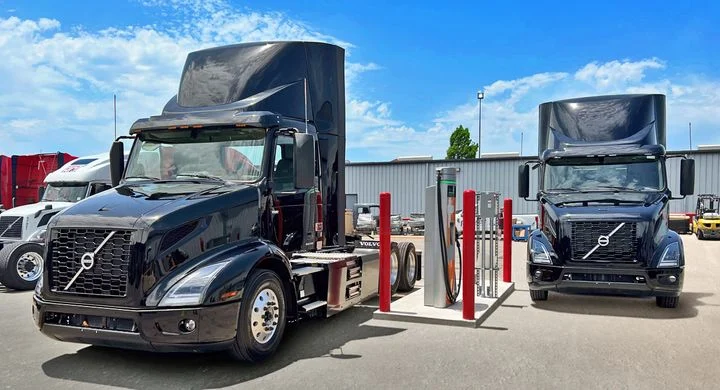
There’s more to making the switch to an electric fleet than buying trucks. You also need a plan for building charging infrastructure. How do you make the switch from diesel to electric in a way that reduces your fleet’s ecological footprint and keeps your trucks on the road? Heavy Duty Trucking talked to industry experts about what it takes to set up a reliable charging system.
Brendan Harney, vice president of EV charger company Porterra Energy, says planning phases need to look at the type of charging, as well as the operational bounds of the trucks. This includes when vehicles are available for charging, how long they need to charge between shifts, and average battery consumption while in service.
Jan Freimann, vice president of energy services at Ideanomics, says this starts with an assessment. This covers both how trucks are used and the available power infrastructure already on site. From there, you can do detailed cost of ownership analysis across possible vehicle and charging solutions. Freimann gives three tips for companies looking into electrification: start as early as possible, form partnerships with both vehicle and charging solution partners, and plan for change.
John Vernacchia, director of energy transition at Eaton, agrees on starting early. He says trucking companies should lay out a 5 to 10 year plan and start working on infrastructure long before the first truck deliveries. Companies may need to work with their electric utility to add the infrastructure needed to keep chargers supplied with power, and deploy on-site generation.
Cost will soon be less of a factor, thanks to the Inflation Reduction Act and the National Electric Vehicle Infrastructure Formula Plan. Now that all 50 states have submitted electrification plans, the program will release the first round of funding, totaling $5 billion.
Where will we get the power needed for these vehicles? Distributed Energy Resources (DERs) support the grid with small scale generation and storage. This includes solar panels, wind turbines, generators, stationary batteries and electric vehicle batteries. Power from these sources is used by charging stations, or sold to the electric company.
Additional credit:
https://www.truckinginfo.com/10181496/challenges-of-charging-commercial-trucks

